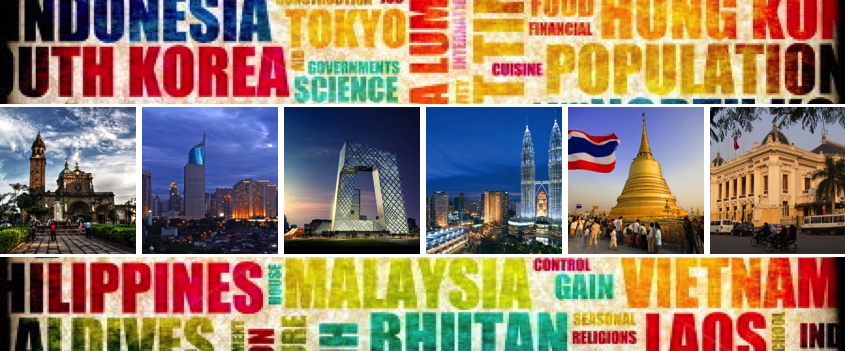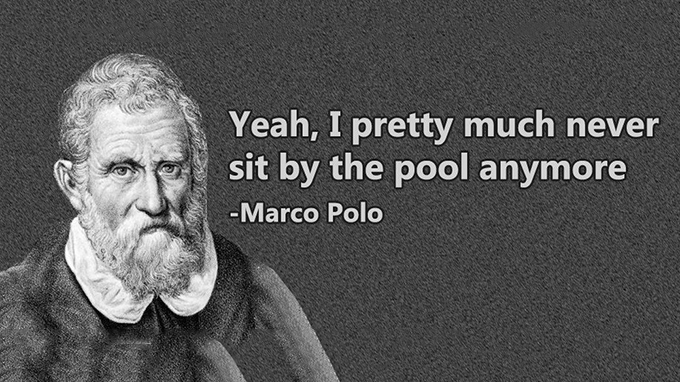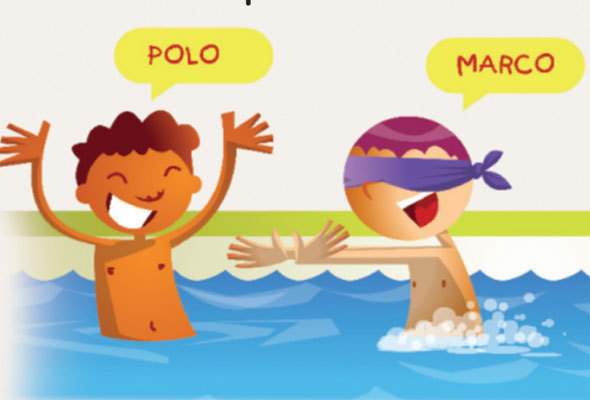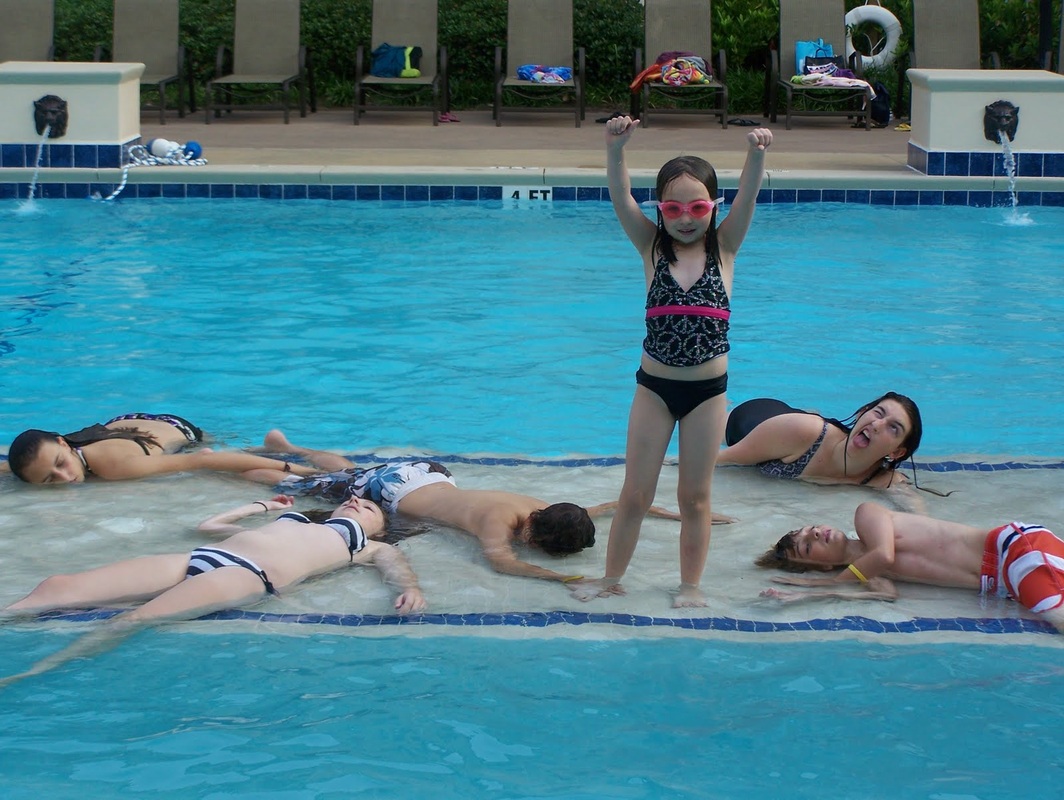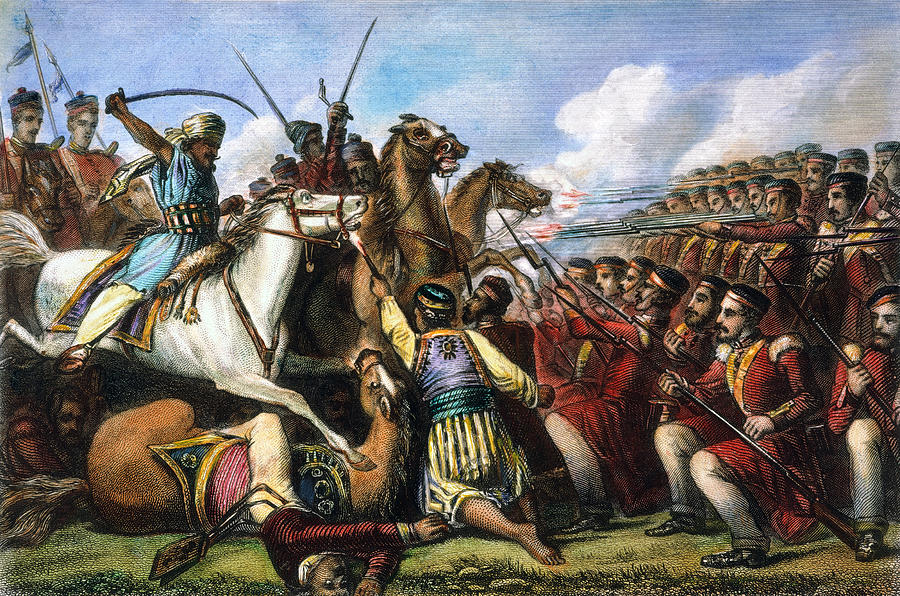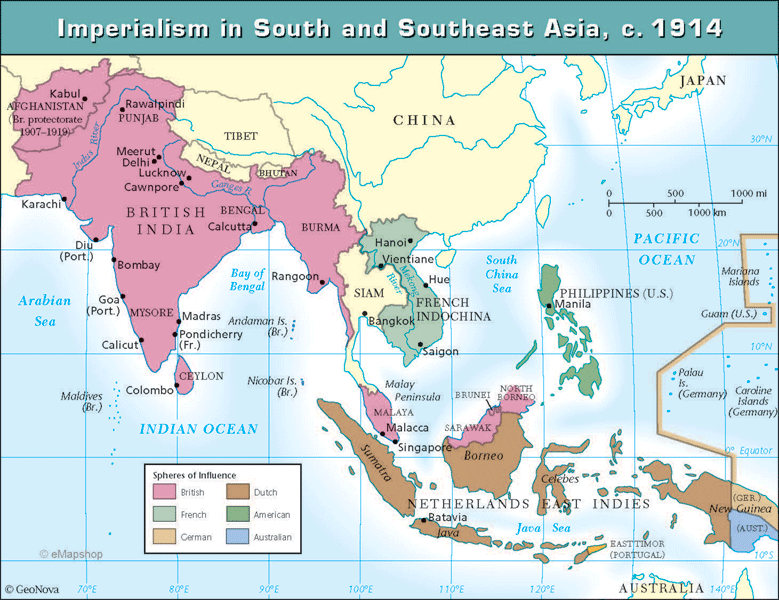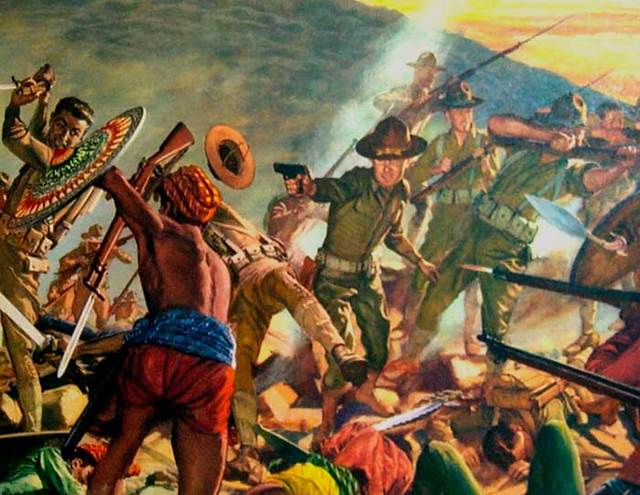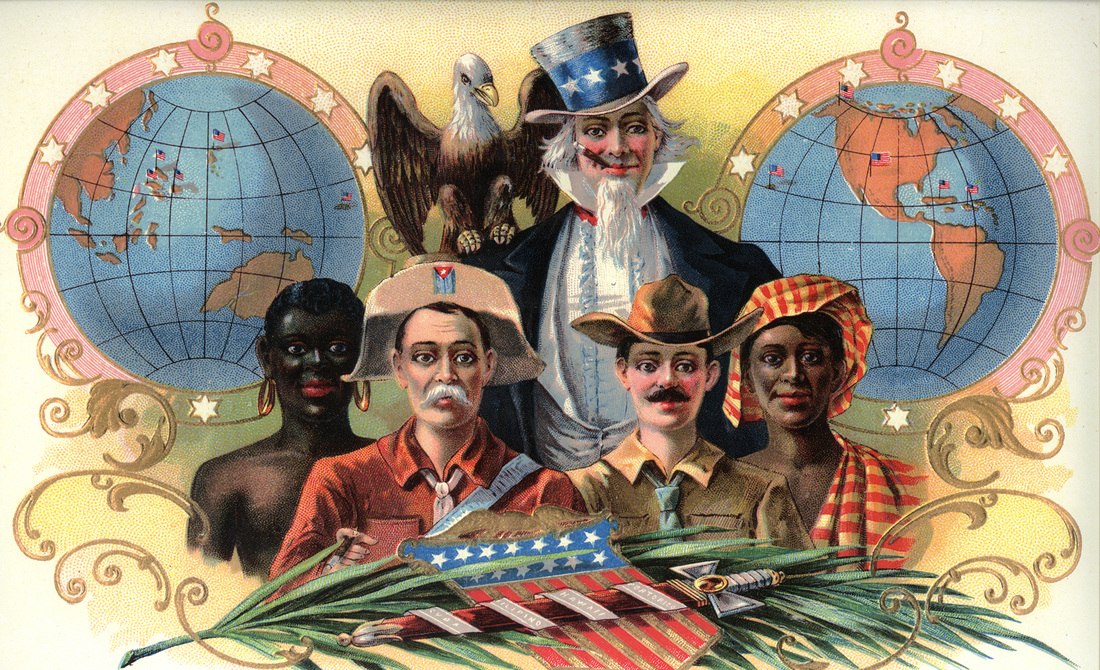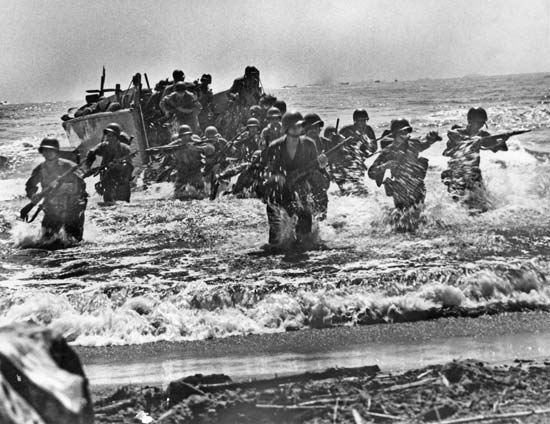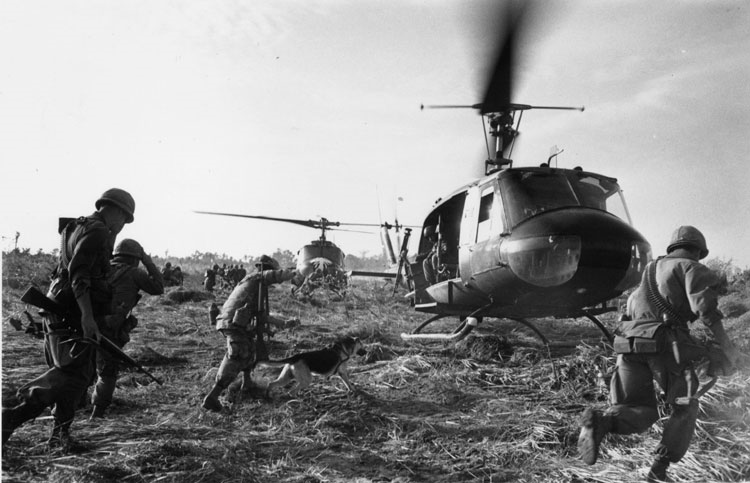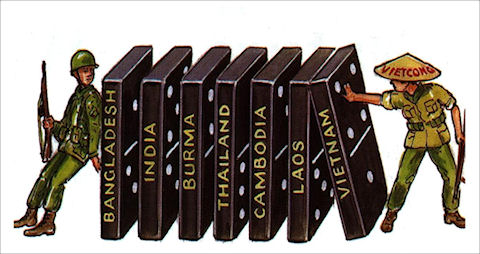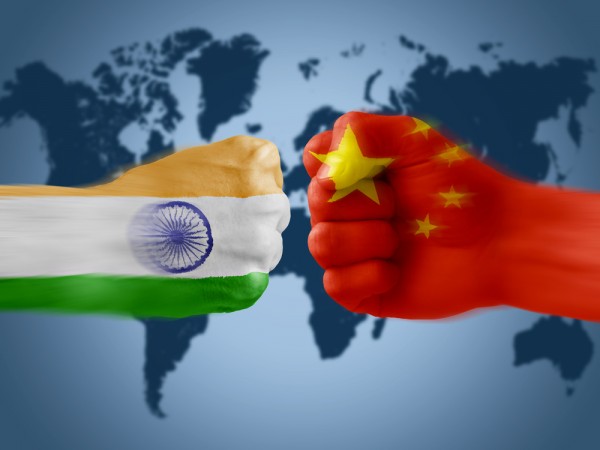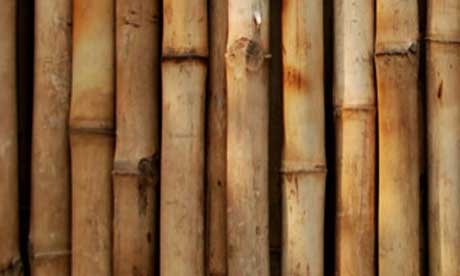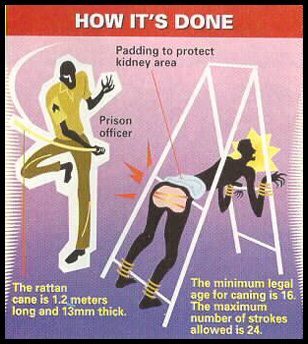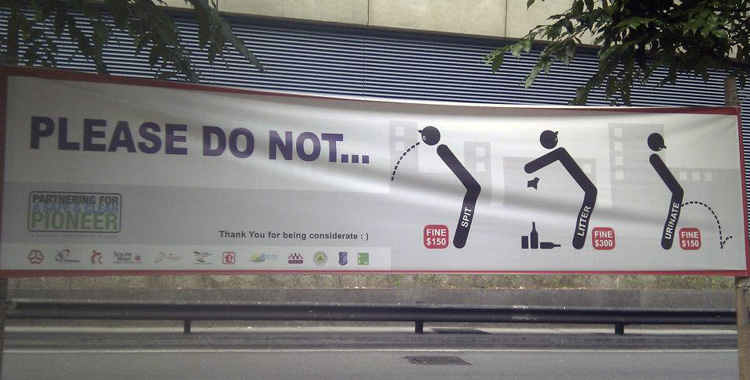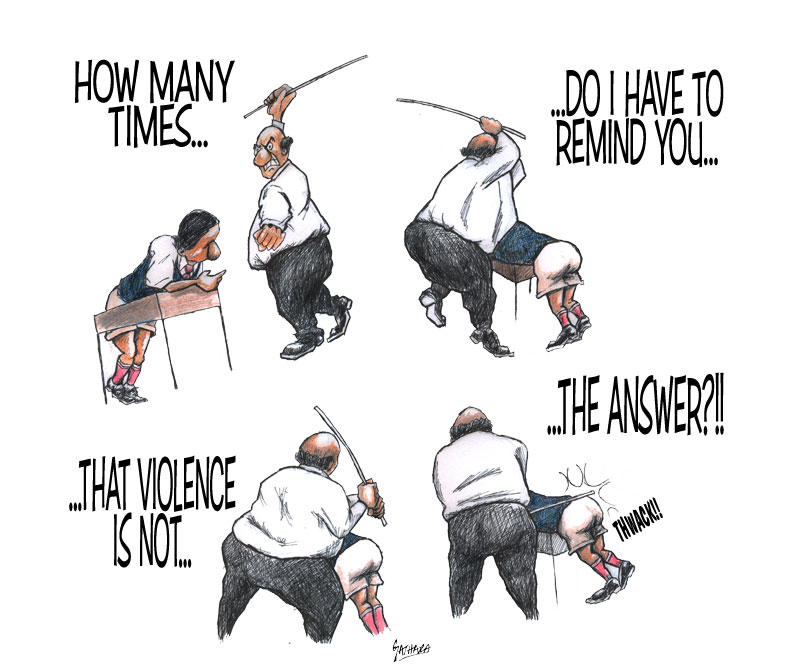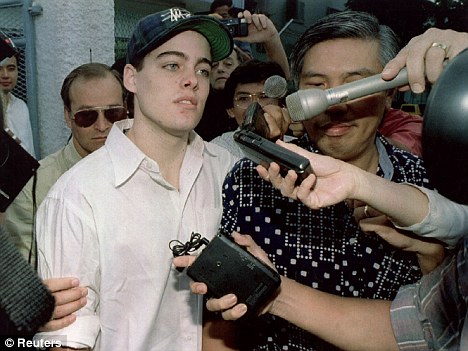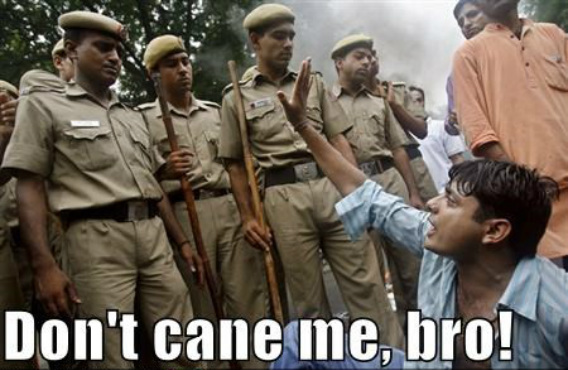Scramblin' thru... Scramble for S.E. Asia
Marco Polo's One Night in Bangkok...
|
"Marco?"
"Polo!" "Marco?" "Po... Fish out of water!" Ah, yes, the sounds of summer! Nothing like telling someone to close their eyes in the middle of a pool while others lure the unsuspecting "it" into the deep end while a few brave souls venture out of the water to run around the slippery concrete in order to allude capture! Good times. Good times. Some of you may know that water activity as "The Marco Polo Game". I prefer to call it "The Western Imperialist Bastards Impose Their Will on Southeast Asia Game". And every time you play it, the imperialists win. You see, ever since the Italian explorer Marco Polo returned from China in 1295, there has been an interest in Asia. After all, Asian silks and spices tempted European explorers to find water routes to India and China. Of course, we know they took a wrong turn at Albuquerque and ran into and the Americas. But that's another story for another day... Africa was not the only target of the Europeans during "New Imperialism". Southeast Asia soon fell under the watchful eye of the West. European imperialism in Southeast Asia was fairly reactive in its nature. Sort of the whole "keeping up with the Joneses" mentality. If Britain got one colony... France would get two. And once France had two colonies... Britain just had to get three. In 1819, Britain founded Singapore on an island at the tip of Malaysia in Southeast Asia. Singapore quickly became a stopping point for ships going to China. Next, Britain took Burma (now Myanmar) to protect its possessions in India. And we all know how Britain went about securing its interests in India... France, which had lost its empire to the British by the end of the 18th Century, had little geographical or commercial need for expansion in Southeast Asia. Except that Britain was doing it... which meant France had to do it. Their rivalry with Britain, coupled with a belief that French culture was superior to everything and everyone, resulted in France sending Catholic missionaries to Vietnam. To keep the British from moving there, France forced the Vietnamese to accept protection and occupied the city of Saigon. During the next 30 years, France extended its control over Cambodia, Annam, Tonkin, and Laos, eventually rolling all of its possessions into "French Indochina". By 1900, France had created an empire in Indochina that was 50% larger than the mother country! (It's still a matter of debate, however, whether the colony was commercially profitable for France... or if it was all for show.) After U.S. Navy Commodore Matthew C. Perry bullied Japan into opening its doors to the West in the 1850s, the U.S. took this imperial swagger into other areas in the Pacific and Southeast Asia. At the same time, Spain was finding it increasingly difficult to maintain control of territories it had held in these areas since the 16th Century. In 1896, a revolt against Spanish rule broke out in the Philippines. U.S. territorial gains in the Pacific posed an even greater threat to Spain's remaining colonial holdings. As the U.S. continued to expand its economic and military power in the Pacific, it declared war against Spain in 1898. During the Spanish-American War (begun originally to kick Spain out of Cuba on the other side of the globe), the U.S. destroyed a Spanish fleet at Manila and landed troops in the Philippines. Spain later agreed by treaty to cede the Philippines in Asia, Guam in the Pacific, and Puerto Rico in the Caribbean to the U.S. When the U.S. refused to grant the Philippines their independence, an insurrection broke out. It took the U.S. almost 15 years to fully subdue the rebels. One year following its treaty with Spain, the U.S. occupied the small Pacific outpost of Wake Island. Asia and Southeast Asia later became chess pieces during World War I and World War II. None of the colonial powers had the resources to withstand two world wars and maintain direct rule in Asia. Although nationalist movements throughout the colonial world led to the freedom of nearly all of the Asia's remaining colonies, decolonization was slowed thanks to the Cold War (1945-1991). Southeast Asia and its surrounding areas served as the battleground for numerous proxy wars between the U.S. and Soviet Union, most notably Vietnam. The rapid post-war economic development of East Asia, India, and China, along with the collapse of the Soviet Union, loosened European and U.S. influence in Asia, generating speculation about the emergence of India and China as future superpowers. Thanks a lot, Marco Polo... |
|
|
Marco Polo (1254-1324) was a Italian explorer who offered Europeans a firsthand view
of Asian lands after his 17-year stay in China and is credited with stimulating
interest in the Asian trade.
Marco Polo's account of his travels (1271-1275 to get to China; 1275-1292
stayed in China; and 1292-1295 returned to Venice) deeply influenced European society. In fact, for
hundreds of years, his story was one of the only sources of information Europeans had on China. Cartographers looked to it for information about Asian lands, and merchants drew inspiration from it
when they planned commercial ventures.
Portuguese mariners studied it as
they sought a sea route to India
in the 15th Century.
The children's game that bears his name can trace its origins to a legend about the real Marco Polo. Supposedly, it dates back to when Marco was 17 and traveling to China with his father and uncle. Marco was very tired and fell asleep on his horse. His horse must have sensed this and slowed down, dropping them back from the caravan. When Marco awoke, he did not see his family. He soon began to hear voices in the desert thinking it was the caravan calling for him, hence the yelling of "Marco!" with the response "Polo!" Marco was later found... but it was not his family calling. He was hallucinating. So, naturally, we named a game for kids after a dude who was tripping balls in the desert. Checks out. |
|
|
Caning is used
as a form of legal corporal punishment for males in Singapore, an island country in Southeast Asia. There are six different "categories" for caning, all of which carry more lashes. They are (from most severe to least): judicial, prison, reformatory, military, school, and domestic/private. People who are caned are strapped to a wooden frame and lashed across the bare buttocks with a long rattan stick. The cane is four feet long and half an inch think. It is soaked in water beforehand to make it more flexible and prevent it from splitting during use. (Lighter canes are used for people under 18.) The hits are applied with the full force of the jailer's arm. When the rattan hits the butt, the skin disintegrates, leaving a white line and then a flow of blood. Wounds from a caning can take a week to a month to heal. When a large number of strokes is administered, there is long-term scarring. Men who have been caned before described the pain as "unbearable" and "excruciating". A recipient of 10 strokes said, "The pain was beyond description."
In 1993, caning sparked a diplomatic crisis between Singapore and the U.S. when 18-year-old Michael Fay, a U.S. citizen, was convicted of vandalizing cars in Singapore. (He was living in the country with his mother and his stepfather and enrolled at the Singapore American School.) He was to be caned six times, but thanks to cries from his lawyers that caning violated the 8th Amendment, that he suffered from ADHD, and after pleas from President Bill Clinton, Fay's sentence was dropped to four lashes, which he received on May 5, 1994. It's safe to say there's a reason Singapore has the lowest crime rate in the world... |

